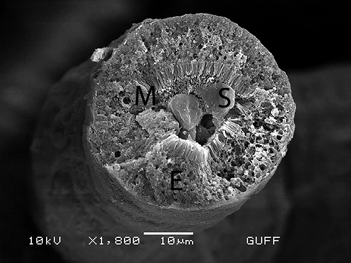Article contents
Histomorphology of the Malpighian Tubules and the Chemical Composition of the Spherocrystals in the Tubule Epithelial Cells of Adult Leptophyes albovittata (Kollar, 1833) (Orthoptera, Tettigoniidae)
Published online by Cambridge University Press: 04 August 2021
Abstract

In insects, the number, cytological and histological structures, and the spherocrystals of the Malpighian tubules (MTs) can vary considerably in different insect groups. These differences are considered important because they can be used as taxonomic characters. For this purpose, the ultrastructure of the MT epithelial cells in Leptophyes albovittata (Kollar, 1833) (Orthoptera, Tettigoniidae) was examined by light microscopy, scanning electron microscopy, and transmission electron microscopy. The wall of each tubule consists of a single layer of cells. These cells have round-shaped nuclei. Two different cell types were demonstrated in the tubule cell. These are cells that have electron-dense cytoplasm and electron-lucent cytoplasm. It was observed that the cytoplasm of these cells has many spherocrystals. The chemical composition of the spherocrystals was found to be high in carbon, phosphorus, and manganese in tubule cells.
- Type
- Biological Applications
- Information
- Copyright
- Copyright © The Author(s), 2021. Published by Cambridge University Press on behalf of the Microscopy Society of America
References
- 1
- Cited by





